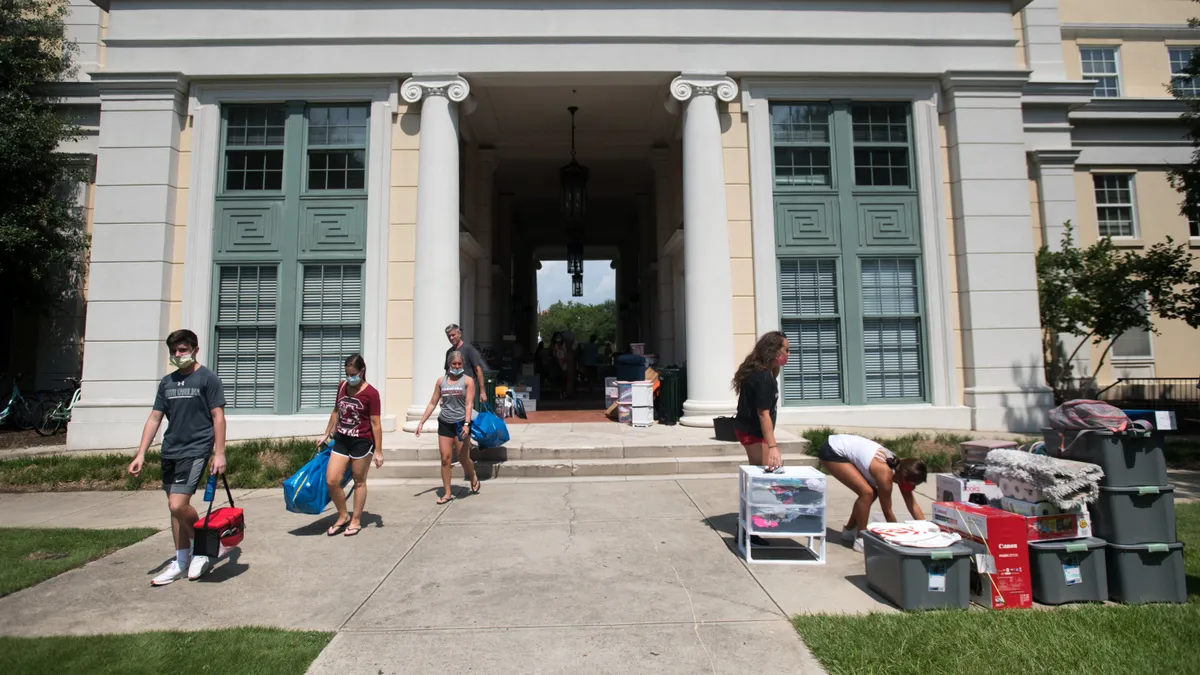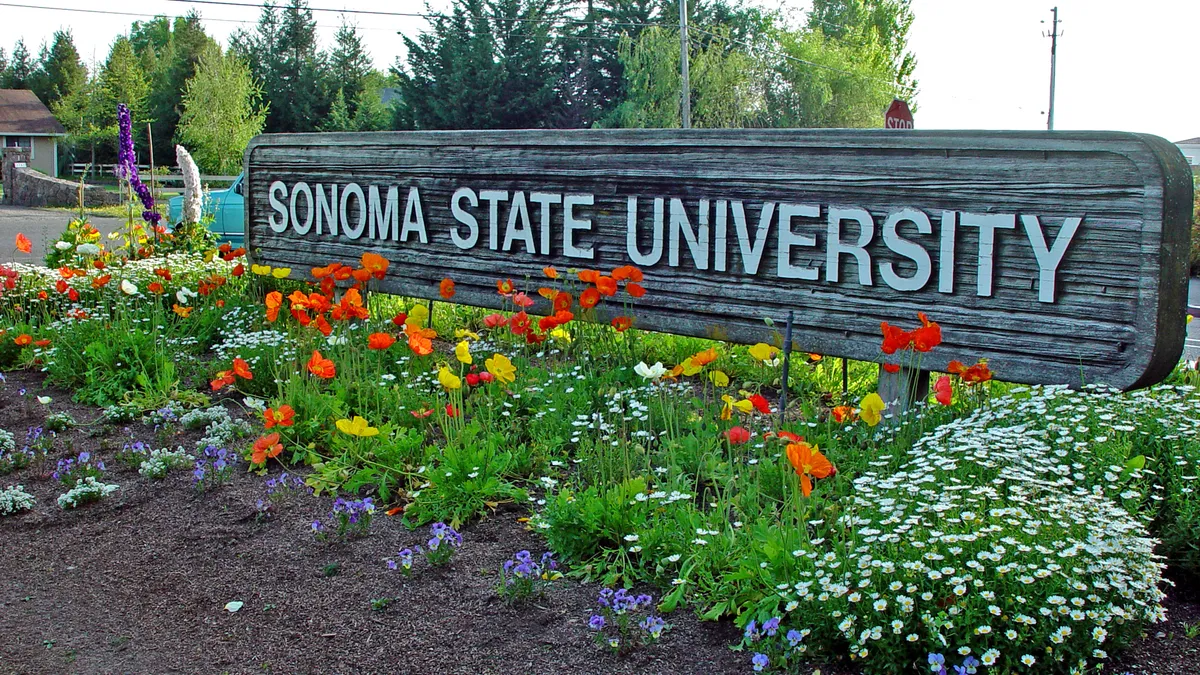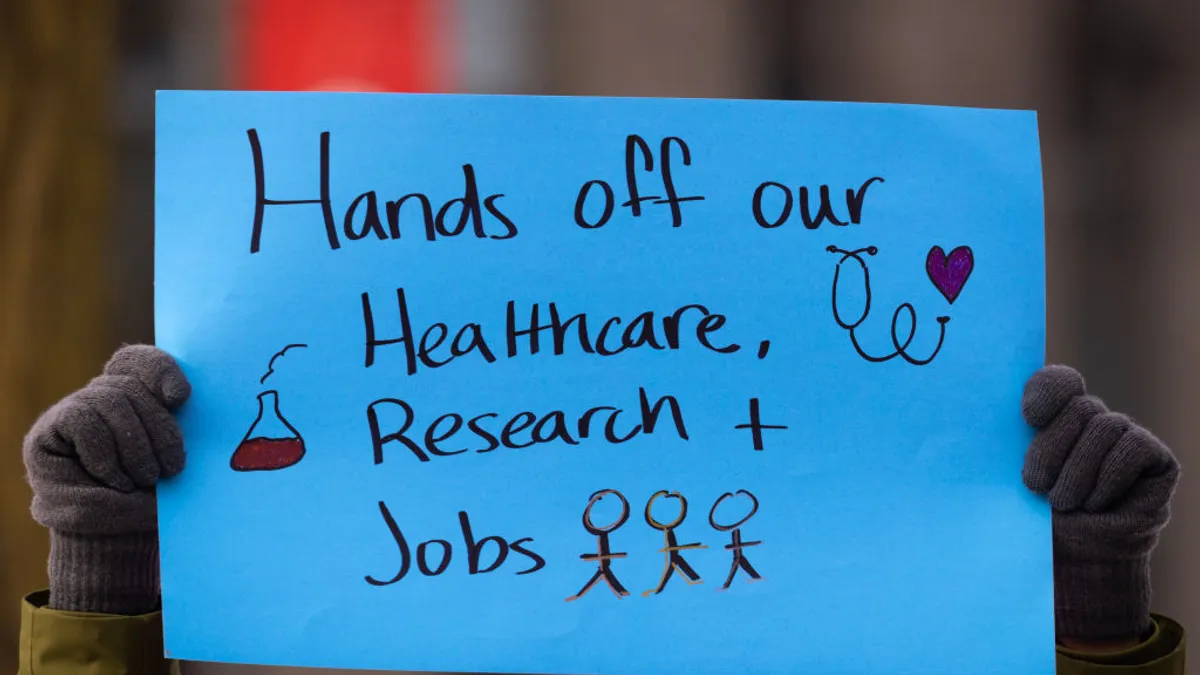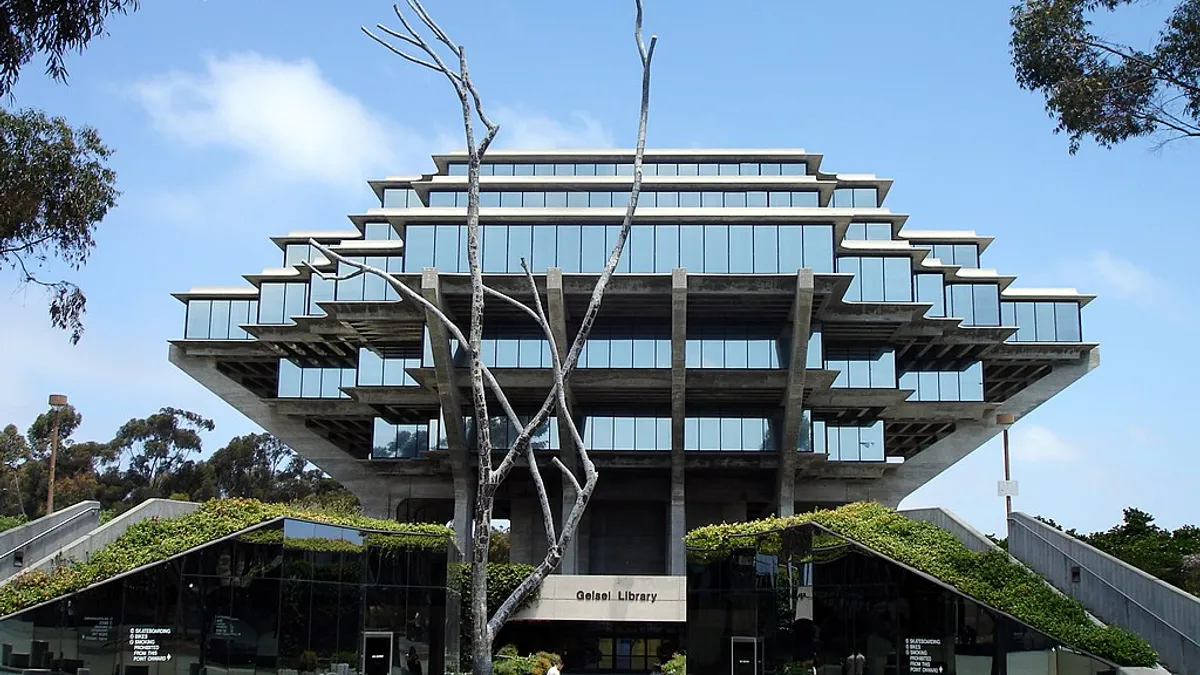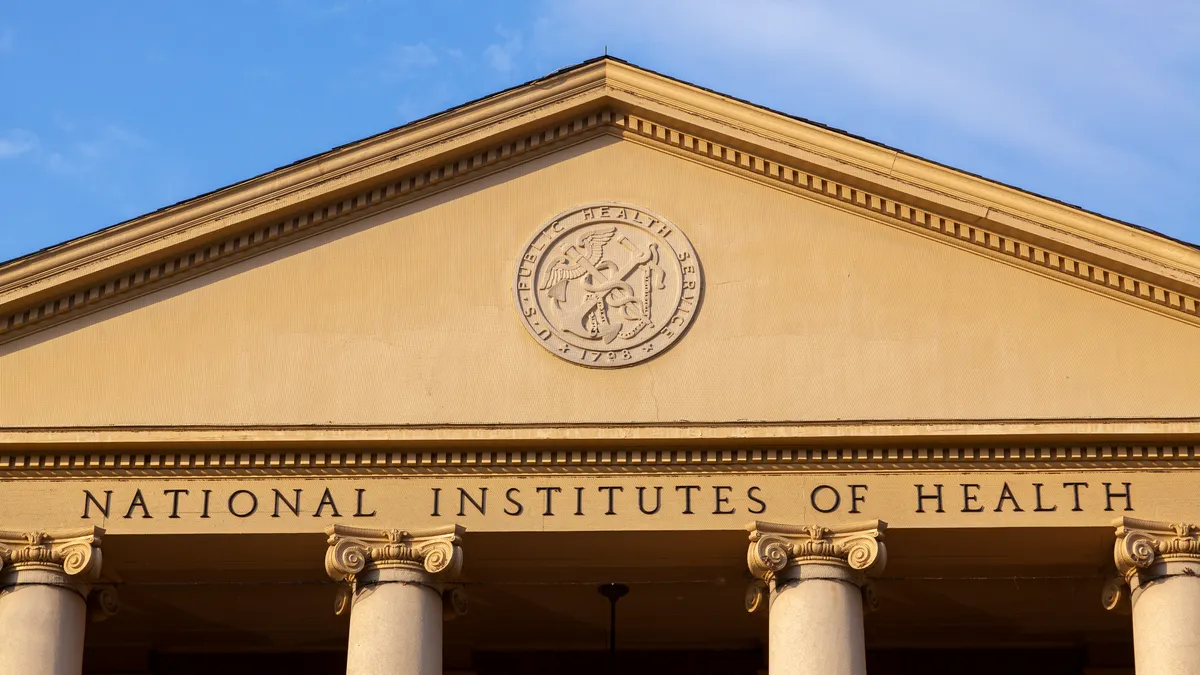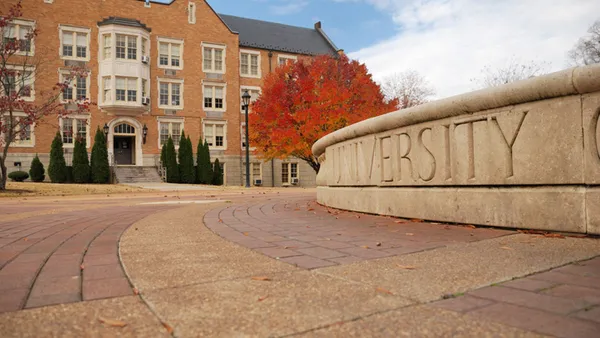Public colleges often recruit out-of-state students to bring in additional tuition dollars, but a new study finds that they may not be as much of a revenue generator as previously thought.
An increase in out-of-state students at public colleges was linked to a decrease in per-student tuition revenue, according to the research, conducted by Robert Kelchen, a higher education professor at the University of Tennessee, Knoxville.
It was also often associated with declining spending on student services, meaning that in-state students usually didn't benefit from public colleges recruiting from beyond their state borders.
The report's findings contradict common assumptions about out-of-state recruiting.
"In general, don't expect to get a lot of money — or a lot more money — from out-of-state students," Kelchen said.
Why out-of-state students may not bring in more revenue
Public colleges often focus on luring students from across state lines because they can charge them higher tuition rates than their in-state peers. Some researchers chalk this trend up to declining state support, which has forced these institutions to seek new ways to raise revenue.
State flagship universities have increased their share of out-of-state students by an average of 55% since 2002, according to research from The Brookings Institution, a center-left think tank. This "student swap" squeezes out in-state students and drives up the cost of higher education, one of the Brookings researchers argued in a recent op-ed for The Wall Street Journal.
But these students may not bring a revenue boost to public institutions, Kelchen's research found. More selective public colleges tended to see a decrease in total revenue when they enrolled more out-of-state students, while less-selective schools didn't see a difference.
"This surprising finding suggests that selective colleges are not gaining additional revenue from more out-of-state students who face far higher sticker prices than in-state students," Kelchen wrote in the paper.
More selective schools also saw decreases in their per-student spending as their out-of-state population rose. Less selective colleges, meanwhile, saw no changes.
"In general, don't expect to get a lot of money — or a lot more money — from out-of-state students."

Robert Kelchen
Higher ed professor, University of Tennessee, Knoxville
Kelchen offered several potential explanations for the findings.
For one, the findings could be influenced by regional tuition exchanges, an arrangement among several neighboring states that allow many out-of-state students to receive the same or similar tuition rates as their in-state peers.
The Midwest Student Exchange Program, for instance, lets students from several states in the region receive tuition discounts at some 100 participating colleges. However, Illinois announced this year that it's ending its participation in the compact because no college in the state was opted into the program. At least four other states are inactive members.
Individual institutions also offer tuition matches. The University of Maine offers incoming, academically accomplished out-of-state students the same rate as their home state's flagship university.
"The goal isn't to bring in students paying $40,000," Kelchen said. "The goal is to basically keep enrollment steady, to be able to offer the same programs and services that they used to for the people who live in Maine."
The link between declining per-student spending and increasing out-of-state students was also a surprising finding, Kelchen wrote in his study. He suggested public universities may pursue out-of-state students to shore up their finances with strategies that also include budget cuts.
Many public colleges are facing stiff headwinds. Public support for higher ed has wavered for years, with four in 10 states reporting that their funding for the sector declined in fiscal 2021, according to the annual Grapevine report.
At the same time, some regions are seeing sharp enrollment declines. Those are expected to worsen around 2026, when there will be fewer high school graduates due to declining birth rates during the Great Recession.
"Some of this is just trying to keep the same size you were in a challenging demographic situation," Kelchen said.
How should colleges react?
The paper challenges the idea that out-of-state students are a revenue boon for colleges, Michael Harris, a higher education professor at Southern Methodist University, said in an email.
"Public universities are understandably looking for additional — and stable — sources of funding with the challenge of state funding," Harris said. "The findings of this research suggest the emphasis on nonresident students may not be the windfall institutional leaders promised."
However, each institution will have to look at its own unique circumstances, which a study using national data can't address. Brendan Cantwell, a higher education professor at Michigan State University, echoed those comments, saying in an email that campus officials will be more concerned with returns of their own recruiting efforts than sector-wide averages.
Cantwell also said the study was well done and the findings were credible but noted that the data used has "serious limitations."
In the paper, Kelchen noted that his model did not directly account for regional tuition exchanges and that some of the trends in institutional spending may be due to changes in the way colleges report their data.
However, the findings suggest that many public college officials don't have many options to quickly change their financial situation, including by recruiting out-of-state students, Cantwell said.
"Policy decisions probably matter more than campus strategy," he said.



